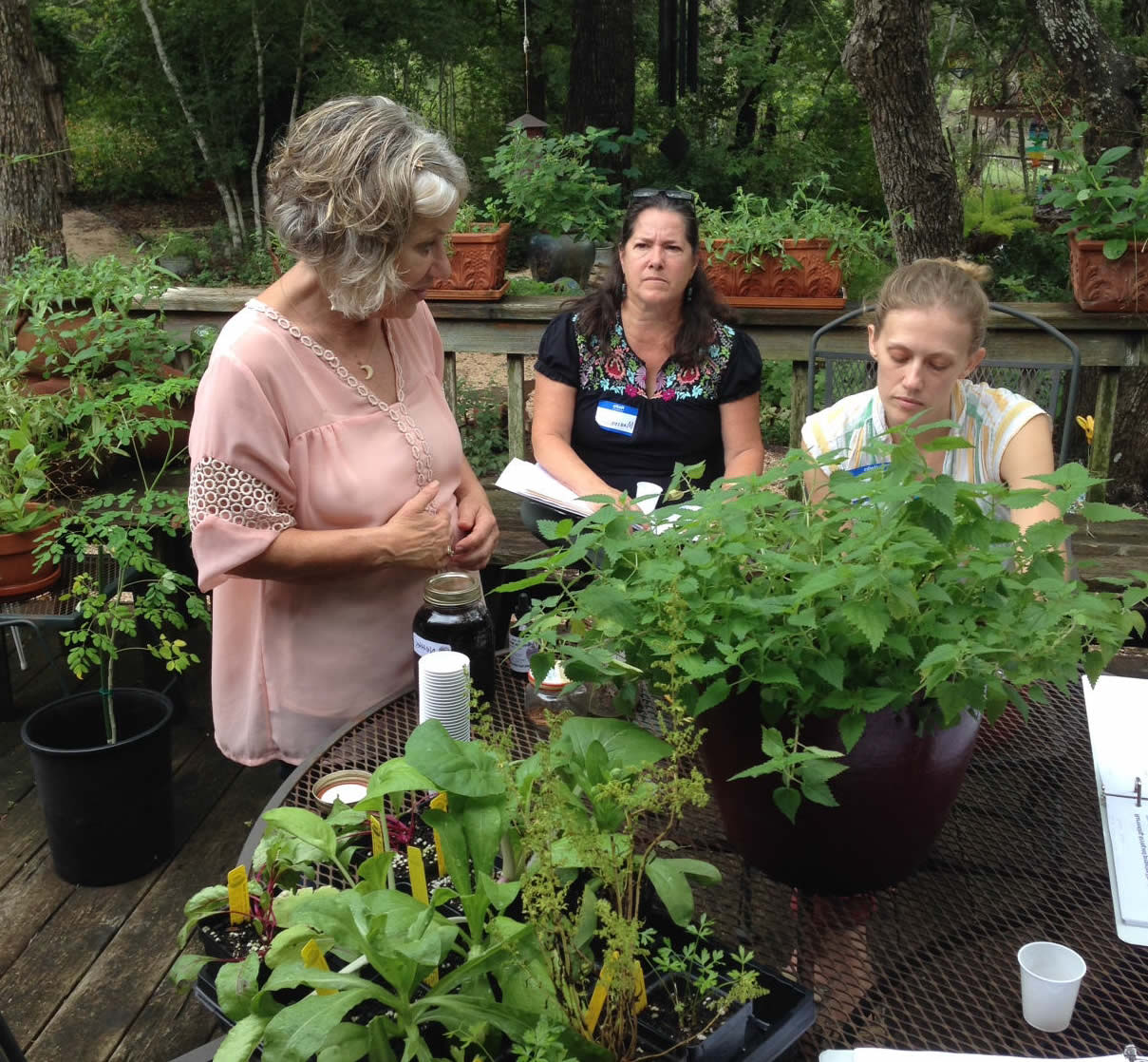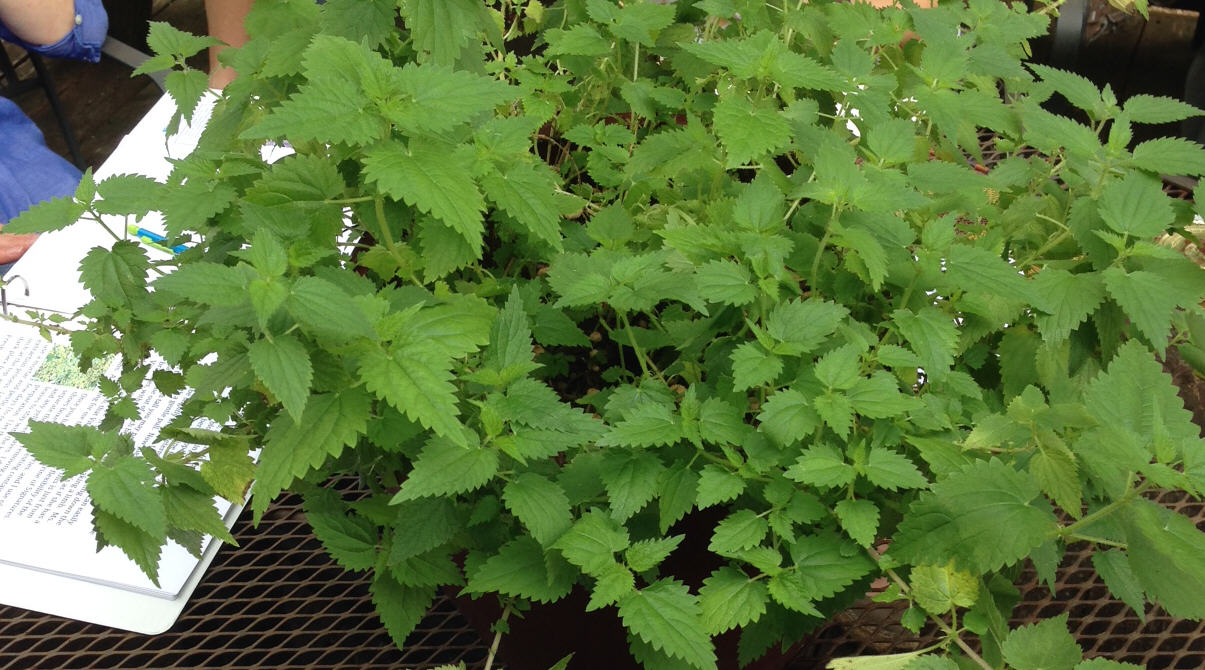|
| CEDAR FEVER?
Nettles to the Rescue! |
 Nettle,
Urtica dioica, is
a common plant which grows in waste ground and likes to grow
near human habitations.
Nettle, also known as Stinging Nettle, Common Nettle or
Small Nettle is different from our Texas grown Bull Nettle,
which is also commonly found in waste areas. Nettle,
Urtica dioica, is
a common plant which grows in waste ground and likes to grow
near human habitations.
Nettle, also known as Stinging Nettle, Common Nettle or
Small Nettle is different from our Texas grown Bull Nettle,
which is also commonly found in waste areas.
Many Texans suffer from what we call “Cedar Fever” in January.
This ailment can be a severe set of respiratory symptoms
including a runny nose, watery eyes, coughing, sneezing,
headache and just feeling weak and miserable.
Due to Nettle’s anti-histamine effect on the body, a
fresh Nettle Tincture has helped many over the years.
It has to be made from the
FRESH plant, not
dried, for the greatest benefit.
Drinking Nettle tea can also be helpful, but it is the
fresh Nettles Tincture
that will help most.
You can take the tincture frequently throughout the day
as Nettle is a safe, tonic herb with no contra-indications.
Please see:
Fresh Nettles Tincture
to purchase some tincture now.
You can also drink my
Respiratory Tea:
to ease lung congestion and assist with the many symptoms
associated with colds and allergies.

One of the identifying aspects of Nettle is the white, prickly
fiber that grows along the stem.
Therefore I grow my Nettle in very large clay pot so I
can keep it isolated and the visitors to my garden do not get
stung. I have
noticed, however, that you can gently harvest the Nettle leaves,
with bare hands, if you talk sweetly to the plant asking its
permission for harvest and thanking it for all its many gifts.
So
what are some of those gifts?
Nettle is actually my favorite herb that I use the most
(be careful I might say that about several herbs).
Nettle is a tonic herb and it can be eaten as a food.
Like spinach, or any other green, it can be steamed or
stir-fried with garlic (YUM). Nettle is known as a Potherb.
Nettle
 makes a delicious, earthy tea, which can be drunk
anytime. It is
loaded with nutrients such as Vitamins C, K, A, Iron, Calcium
and Chlorophyll.
This herb can benefit the entire body and is particularly good
for anemia. Nettle
also has a natural antihistamine so it may be used for asthma, other
lung congestive problems and even our Austin famous cedar fever,
as I mentioned above.
Nettle also acts as an effective diuretic, helps to
eliminate uric acid and reduces water retention.
Nettle is ideal to drink during menstruation, as it not
only reduces water retention but it is also effective for
profuse menstruation. Nettle is also an
Alterative as it acts
to nourish and purify the blood. When I drink
Nettle tea I feel
that I am drinking the blood of Mother Earth. makes a delicious, earthy tea, which can be drunk
anytime. It is
loaded with nutrients such as Vitamins C, K, A, Iron, Calcium
and Chlorophyll.
This herb can benefit the entire body and is particularly good
for anemia. Nettle
also has a natural antihistamine so it may be used for asthma, other
lung congestive problems and even our Austin famous cedar fever,
as I mentioned above.
Nettle also acts as an effective diuretic, helps to
eliminate uric acid and reduces water retention.
Nettle is ideal to drink during menstruation, as it not
only reduces water retention but it is also effective for
profuse menstruation. Nettle is also an
Alterative as it acts
to nourish and purify the blood. When I drink
Nettle tea I feel
that I am drinking the blood of Mother Earth.
So those are just some of the medicinal benefits of Nettle.
It can also be used as a green dye and the tough fibers
of the stalk can be made into cloth. If you do get a nettle
sting, the juice of the plant itself, along with
Yellow Dock, Rumex
crispus, may be used as an antidote.
 So
never again think negatively of this incredible herb. So
never again think negatively of this incredible herb.
With its stingers and all, (click the photo to enlarge
it.) Nettle is so helpful to so many
systems of the body.
I like Nettle as a tea, but you can also use it as a
tincture or even in capsules.
Even better, plant your own!
What is an alterative?
Commonly referred to as Blood
Purifiers.
These are agents that gradually and favorably alter the
condition of the blood. They aid the body in assimilating
nutrients and eliminating metabolic waste products: Neutralizes
acidic conditions in the body: Aids in protein assimilation.
Generally extremely high in minerals and some vitamins.
Examples: Burdock Root, Dandelion Leaf
and Root ,Echinacea,
Red Clover Golden Seal,Oregon Grape Root, Nettles, and Yellow
Dock
Root
credit: Rosemary Gladstar
|

Know Your
Herbs!
Use the
THE
HERBAL INFORMATION
INDEX
to research any herb
contained in an EZ Herbs product.
|